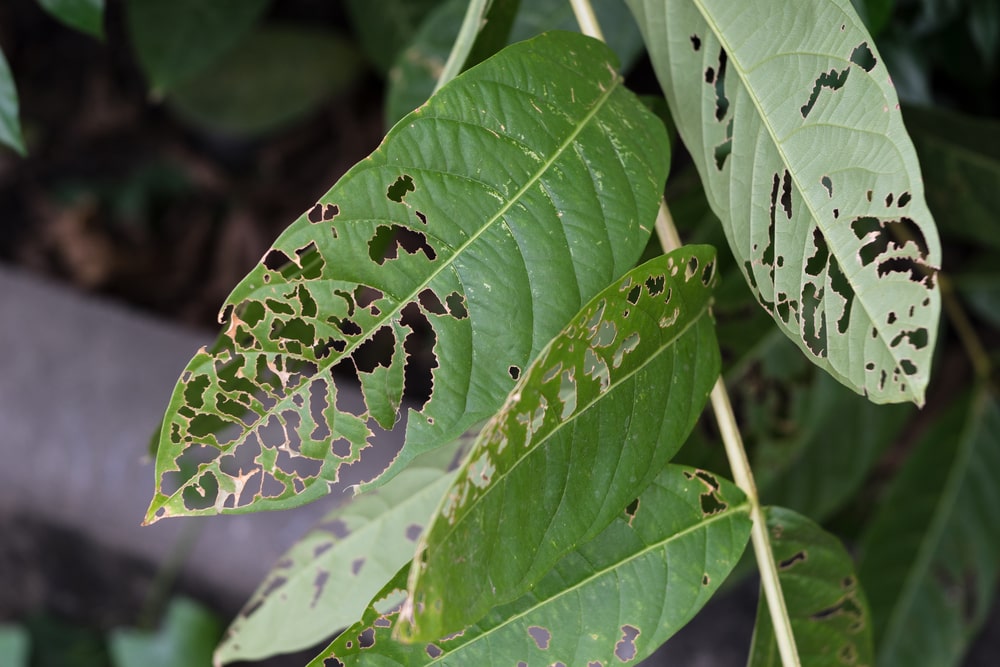WHAT TO DO ABOUT CONTROLLING THE DAMAGE
Now that we are in late June, all of us have done a lot of new planting of shrubs, trees, annuals, vegetables, and perennials. In doing all this planting, what we did was to lay out the best smorgasbord of food for various insects.
The BIG question is “how do I tell what’s eating my plants”? Over the past couple of weeks I can’t tell you how many people have come into the garden center with samples or pictures of leaves that “something is going on”. These customers are looking for professional advice as to what is going on with their plants. I am glad they bring in samples for us to look at. This is a big help.
IDENTIFYING INSECT DAMAGE
In “talking the talk”, it is important to know the 3 main categories of “bad” bugs. I say bad because not all insects are bad. We have a lot of beneficial insects this time of year as well. The main three categories of “bad” bugs are – CHEWING, RASPING, AND SUCKING. Without this understanding you could buy the wrong control product and not solve the problem and, at the same time, cause more damage to the plant.
CHEWING INSECTS
This is what I am seeing most with the samples – especially chewed leaves from rose bushes. A chewing insect is any insect that has teeth. Most winged chewing insects ( such as beetles, caterpillars, grasshoppers) feed on the leaf tissue, working from the edge of the leaf towards the center and eventually to the leaf stem.
RASPING INSECTS
Rasping insects are mites, snails, slugs, and thrips. They will scrape off the surface of the leaves. They suck up the fluids from the top layer until all the green tissue has been eaten, leaving only the skeleton of the leaf behind.
SUCKING INSECTS
The most common sucking insects are the aphids, scale, and whiteflies. Sucking insects have small mouth parts and they pierce the leaves and stem to suck out the plants’ fluid. Large population of aphids or whiteflies can cause leaf curling, yellowing, or distorted leaves. Most sucking insects also produce large quantities of a sticky substance known as honeydew, which often turns black with the growth of a sooty mold fungus.
TREATING AND PREVENTING INSECT DAMAGE
The gardening trend right now is to try not to use any pesticides on plants in order to protect our beneficial insects, bees, etc. Praying Mantids and Lady Beetles (Lady Bugs) are insects that eat the bad insects.
A BIG question now to ask is “what can I do to control bad insects without using any pesticides”? You do have options. Diatomaceous earth spread on the ground around plants works well. Neem oil spray is very organic. Vinegar and water spray makes a good pest control spray. And, don’t forget how effective a soapy water bath can help to control pests on plants.
HAPPY “SAFE” GARDENING!!!!!!!!!!!

